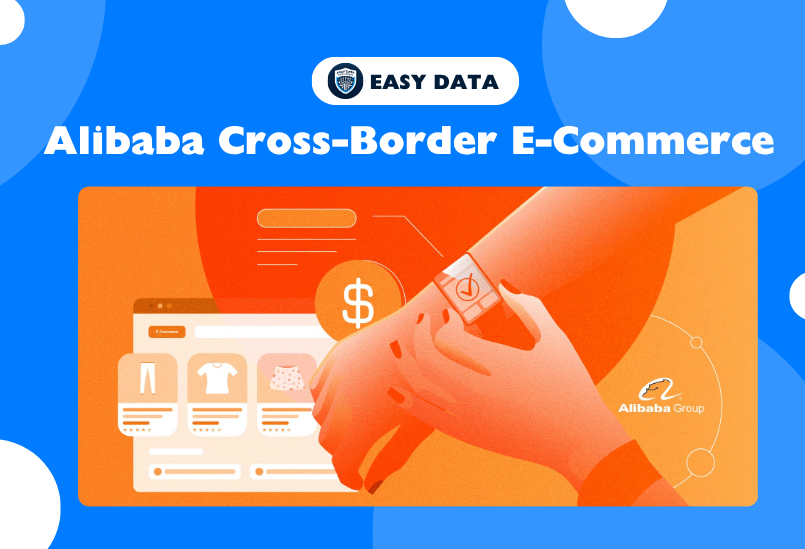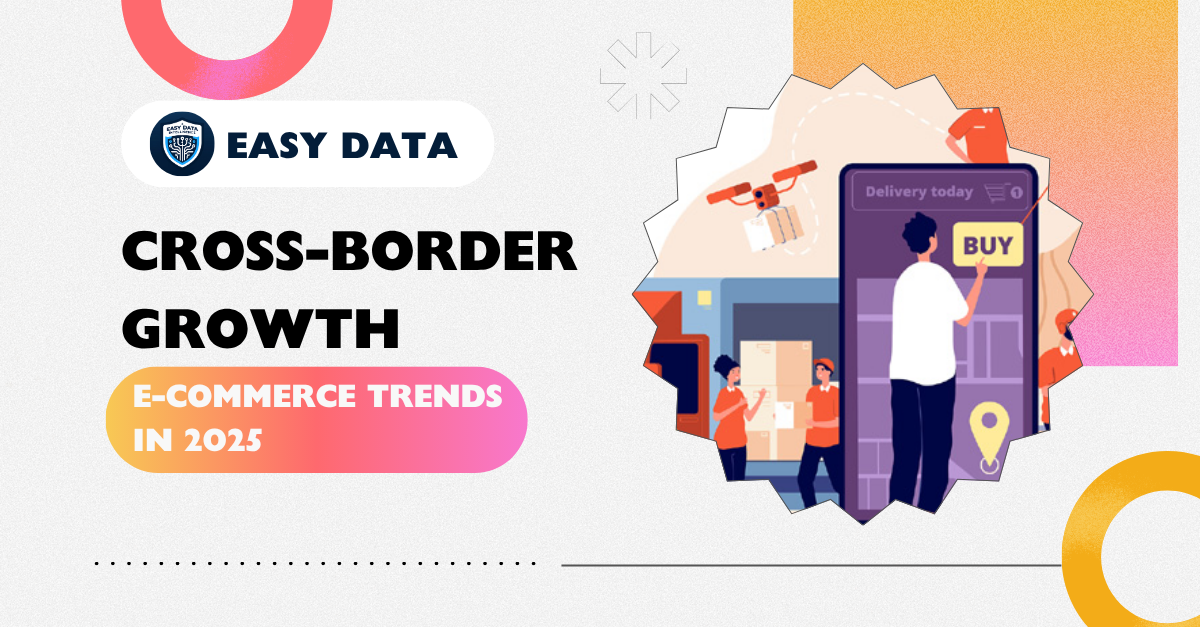Introduction to Cross-Border E-Commerce
Cross-border e-commerce refers to the online buying and selling of goods and services between businesses and consumers, or between businesses, across international borders. Unlike domestic e-commerce, which operates within a single country, e-commerce cross-border transactions involve sellers and buyers located in different nations, facilitated by digital platforms like Amazon, Alibaba, and Shopee. This model encompasses various transaction types, including Business-to-Consumer (B2C), Business-to-Business (B2B), and Consumer-to-Consumer (C2C).
The cross-border e-commerce meaning lies in its ability to break down geographical barriers, offering businesses access to a global customer base and consumers access to a wider range of products at competitive prices. For instance, a small boutique in Vietnam can sell handmade crafts to customers in the United States, while a consumer in Europe can purchase electronics from a Chinese manufacturer via Alibaba cross-border e-commerce platforms like AliExpress.
In 2025, the global cross-border e-commerce market is experiencing unprecedented growth, driven by technological advancements, increased smartphone adoption, and a growing demand for international products. According to industry reports, the market size was valued at approximately USD 1.47 trillion in 2025 and is projected to grow at a compound annual growth rate (CAGR) of 18.4% to 27.91% through 2035, potentially reaching USD 21.895 trillion by 2035. This explosive growth underscores the importance of understanding and leveraging cross-border e-commerce for businesses aiming to scale globally.
Why Cross-Border E-Commerce Matters in 2025?
The rise of cross-border e-commerce is fueled by several key drivers that make it a critical component of modern trade:

1. Increasing Internet and Smartphone Penetration
With over 7.5 billion internet users and 6.8 billion smartphone users projected by 2025, more consumers than ever have access to online shopping platforms. This connectivity enables businesses to reach previously inaccessible markets, particularly in developing regions like Southeast Asia, Africa, and Latin America.
2. Growing Demand for International Products
Consumers are increasingly seeking unique products, competitive prices, and international brands that may not be available locally. For example, K-beauty products from South Korea and fast fashion from brands like Shein have gained global popularity through cross-border B2C e-commerce.
3. Technological Advancements
Innovations such as artificial intelligence (AI), blockchain, and augmented reality (AR) are enhancing the cross-border e-commerce experience. AI-driven personalization improves product recommendations, while blockchain ensures secure and transparent transactions. AR allows consumers to visualize products before purchase, boosting confidence in international transactions.
4. Rise of Mobile Commerce
Mobile commerce is a significant driver, with 73% of e-commerce sales projected to occur via mobile devices in 2025. Platforms like cross-border e-commerce Shopee have capitalized on this trend, offering mobile-friendly interfaces and localized payment options to cater to Southeast Asian markets.
5. Regional Trade Agreements
Agreements like the Regional Comprehensive Economic Partnership (RCEP) simplify cross-border e-commerce operations by reducing trade barriers and streamlining logistics, particularly in Asia-Pacific, which accounted for 29.4% of the market share in 2025.
Cross-Border E-Commerce Examples
To illustrate the concept, let’s explore some real-world cross-border e-commerce examples:
Alibaba Cross-Border E-Commerce

Alibaba Group, a Chinese e-commerce giant, is a pioneer in global cross-border e-commerce. Its platform, AliExpress, connects Chinese sellers with consumers worldwide, offering a vast range of products from electronics to fashion at competitive prices. Alibaba’s international commerce retail generated 49.9 billion yuan in revenue in 2024, serving 903 million active buyers globally. By leveraging advanced logistics and payment solutions, Alibaba has become a vital bridge between Chinese manufacturers and international markets.
For instance, a small electronics manufacturer in Shenzhen can list products on AliExpress, reaching customers in Europe, North America, and Latin America. Alibaba’s localization strategies, such as multilingual product descriptions and region-specific payment options, enhance the shopping experience, making it a leading player in cross-border B2C e-commerce.
Cross-Border E-Commerce Shopee
Shopee, a Singapore-based platform, has emerged as a dominant force in cross-border e-commerce in Southeast Asia. With 295 million users across the region, Shopee facilitates cross-border transactions by offering seamless logistics and payment solutions. For example, a Malaysian seller can easily reach buyers in Indonesia or the Philippines through Shopee’s integrated marketplace. Shopee’s focus on mobile commerce and live-streaming features, such as Shopee Live, has revolutionized product discovery and purchasing, contributing to its rapid growth.

Amazon and eBay
Amazon and eBay are global leaders in cross-border e-commerce, operating in over 200 countries and territories. Amazon’s fulfillment centers in 23 countries enable fast and reliable delivery, with 24% of global shoppers’ most recent cross-border purchases made on its platform. Similarly, eBay’s auction-style listings and marketplace model allow sellers to reach international buyers, particularly for unique and vintage items.
Etsy and ASOS
Etsy specializes in handcrafted and vintage goods, connecting artisans with global buyers seeking unique products. ASOS, a British fashion retailer, delivers trendy apparel to over 200 countries, capitalizing on the growing demand for international fashion. These platforms demonstrate how cross-border e-commerce caters to niche markets and diverse consumer preferences.
The Cross-Border B2C E-Commerce Market
The cross-border B2C e-commerce market is the dominant segment, holding a 79.6% share in 2025. Valued at USD 1.866 trillion in 2025, it is projected to reach USD 21.895 trillion by 2035, growing at a CAGR of 27.91%. This growth is driven by the increasing preference for online shopping, particularly among millennials who rely on smartphones for purchases.
🚀 Explore Our E-commerce Data Services
Click to discover real-time crawling solutions for Shopee, TikTok Shop, and Lazada.
Key Segments in Cross-Border B2C E-Commerce
- Apparel and Accessories: This category led the market in 2025 with a 35.3% share, driven by brands like Shein and ASOS.
- Electronics and Media: Accounting for over 30% of the market, electronics remain a top choice for cross-border shoppers due to competitive pricing and variety.
- Personal Care and Beauty: Products like K-beauty and J-beauty are in high demand, particularly in Asia-Pacific and North America.
- Payment Methods: Digital wallets dominate with a 51.4% share, followed by credit/debit cards at 40%. Platforms like PayPal, Alipay, and WeChat Pay are critical for seamless transactions.
Regional Insights
- Asia-Pacific: Leading with a 29.4% market share in 2025, Asia-Pacific is driven by China’s $396.9 billion cross-border market and Southeast Asia’s rapid growth.
- North America: With a 24.3% share, the U.S. and Canada benefit from strong e-commerce infrastructure and high per capita spending.
- Europe: Valued at $1.1 trillion in 2025, Europe is a mature market with high purchasing power, led by countries like the UK, Germany, and France.
Challenges in Cross-Border E-Commerce
While cross-border e-commerce offers immense opportunities, it comes with challenges that businesses must navigate:

1. Logistics and Shipping
Shipping across borders can be costly and time-intensive. For example, transporting goods from China to Europe via sea takes 35–45 days, while air transport is eight times more expensive. Businesses must balance cost and speed to meet consumer expectations for fast delivery.
Collaborating with third-party logistics providers like DHL or FedEx, equipped with advanced management software, can streamline operations and enhance customer satisfaction.
2. Currency and Payment Processing
Managing foreign currencies and payment systems is a significant hurdle. Consumers may abandon carts if prices cannot be converted into their local currency. Platforms must integrate applications that automatically convert currencies and support local payment methods like digital wallets and Buy Now, Pay Later (BNPL) options.
3. Regulatory and Tax Compliance
International taxes and regulations vary widely, posing challenges for cross-border e-commerce. Businesses must comply with foreign market tax requirements and understand competitor pricing to remain competitive. Proactive compliance strategies are essential for smooth operations.
4. Language and Cultural Barriers
Language barriers can hinder customer service and trust. Translating product descriptions, website content, and customer support into multiple languages is crucial. Additionally, cultural sensitivity in marketing ensures resonance with diverse audiences.
5. Sustainability Concerns
Consumers are increasingly eco-conscious, demanding sustainable practices like eco-friendly packaging and carbon-neutral shipping. Businesses adopting green initiatives, such as Shopify’s carbon offset programs, can enhance brand reputation and loyalty.
Strategies for Success in Cross-Border E-Commerce
To thrive in cross-border e-commerce, businesses must adopt strategic approaches tailored to global markets:

1. Localization
Adapting to local preferences is critical. This includes translating content, offering region-specific payment options, and customizing marketing strategies. For example, Alibaba cross-border e-commerce excels by providing localized services in multiple languages.
2. Leveraging Technology
AI-driven personalization, AR for product visualization, and blockchain for secure transactions enhance the customer experience. Platforms like Shopee use AI to recommend products, boosting conversion rates.
3. Optimizing Logistics
Partnering with reliable logistics providers and investing in supply chain management software can reduce delivery times and costs. Amazon’s global fulfillment centers are a prime example of efficient logistics.
4. Building Trust
Transparent pricing, robust return policies, and secure payment systems build consumer confidence. Highlighting customer reviews and engaging on social media platforms foster trust and loyalty.
5. Staying Updated on Trends
Businesses must stay informed about evolving trends, such as the rise of social commerce and live-streaming platforms. For insights into the latest e-commerce developments, check out our article on Top 10 E-Commerce Trends to Watch in 2025.
The Future of Cross-Border E-Commerce
The global cross-border e-commerce market is poised for continued growth, driven by emerging trends:
- Social Commerce: Platforms like TikTok and Shopee Live are redefining shopping through live-streaming, projected to generate $800 billion in China alone by 2025.
- Sustainability: Eco-friendly practices will become a competitive differentiator as consumers prioritize sustainability.
- AI and Personalization: AI-driven insights will enable hyper-personalized experiences, increasing customer engagement and sales.
- Cross-Border Trade Agreements: Agreements like RCEP will further simplify international trade, boosting cross-border e-commerce growth.
Conclusion
Cross-border e-commerce is a game-changer for businesses seeking to expand globally and consumers craving diverse products. With platforms like Alibaba cross-border e-commerce and cross-border e-commerce Shopee leading the charge, the market offers immense opportunities for growth. However, success requires overcoming challenges like logistics, regulatory compliance, and cultural barriers through strategic localization, technology adoption, and sustainable practices.
As the cross-border B2C e-commerce market continues to soar, businesses that adapt to these dynamics will thrive in the global marketplace. Stay ahead by exploring the latest trends in our article on Top 10 E-Commerce Trends to Watch in 2025 and start unlocking the potential of global cross-border e-commerce today.
📥 Want to see real data in action?
Book a free demo with our team to get data samples, pricing, and technical consultation tailored to your use case.
Book a Demo Now

Leave a Reply